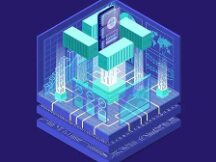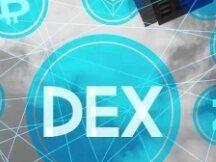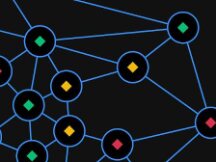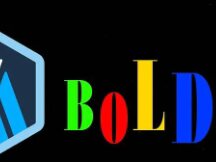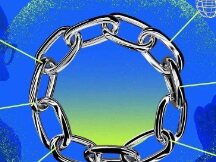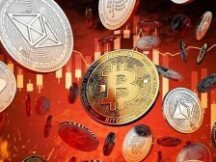"Father of Web3" responds. What is Web3?
What is Web3?
Don't worry if you can't answer. You're not alone. Coming from the venture capital, news or presentation industry, this concept has been around for a while, but it is still difficult for the public to understand what the hype is about.
Basically, Web3 refers to a decentralized blockchain-based online ecosystem. On a larger scale, Web3 represents the next level of the Internet, and possibly the human community. Of course, this is all as you think.
The term Web3 was coined in 2014 by Ethereum co-founder Gavin Wood and was originally called Web 3.0.
Since this is Web 3.0, there is also Web 1.0 and 2.0. The first is a thing of the past and is characterized by the fact that most of the functionality of the website is associated with a static web page. The last time is the present, the time of centralization. Indeed, much of the communication and marketing is focused on the closed platform owned by a handful of tech giants like Google, Meta, Amazon, etc.
From this point of view, Web3 represents the vision of the destruction of the monopoly. The applications developed by the Web3 platform and blockchain technology do not come from large companies, but from individual users to help create and manage these services to get members.
To achieve this, Gavin now heads the Web3 Foundation, which supports technology projects, and Parity Technologies, a company focused on building a blockchain infrastructure for Web3 (the blockchain.Polkadot project).
In a recent interview, Gavin described his vision for Web3 and his future as a Web3 sponsor. Doctors organize key points in the text to clarify the reader's ideas in related areas.

Link: English-speaking researcher Gavin Wood, co-founder of Ethereum and co-developer of version C of the Ethereum client model, completes the Ethereum yellow book and develops the word Solidity specially designed for Ethereum smart contracts. Ethereum's "invisible brain". After the Prism incident, Gavin Wood applied for Web 3.0, hoping that at this point in the Internet, everyone - our digital personas, digital assets, and information - would be able to handle their own destiny.
1.Why the web existsThree?
Gavin thinks the Web 2.0 model is similar to the social model before it appeared on the internet, and that's why we're talking about Web3 if Web2.0 isn't good enough now.
500 years ago, most people lived in small towns and cities, where they met and interacted with people they knew. Generally speaking, they rely on relationship models to ensure that their expectations (on the merits of the business) are truly met, such as purchasing reliable juice trees that do not rot in practice. not much time. It also means that reliability is guaranteed.
At the time, this process was very successful because getting around the city was difficult, long and expensive. So many people have to pay special credit to stay in one place.

(Source : moralis.io)
You could think of Web1 as a read-only network, Web2 as a read-write network, and Web3 as a read-only network, an Internet distribution.
But as people grow we have cities, states, and organizations all over the world, creating a stronger organization but managing to gain the trust of the bigger ones. In principle, it turns out that it meets our expectations. A good example is that in order to trade in a particular company, you must first comply with certain laws.
This is not a good solution. One of the reasons is that it is very difficult to monitor new markets because governments are often slow and take time to catch up. The other is that regulators are not perfect. There is often a certain lag in the door between companies and managers, especially when working with companies.
Another reason why the capacity of regulators is limited beyond the scope of oversight depends on the government's available resources. Although terrorists can be controlled, they cannot wield strong power, and many countries and regions have different procedures.
We have to skip this. Unfortunately, Web 2.0 is still included in this mid-size version.
“It's a broken model,” Gavin said. “We need to deal with non-compliance standards at the operational level. "
2.Less faith, more truth
To describe Web3 in one sentence, Gavin thinks the concept is "less believable, more precise".
In his eyes, "religion" has a special meaning. It is the main "religion". It is the belief that something happened and that the world was run in a way without clear evidence or controversy as to why it happened.
On the other hand, the "real" in his eyes means that he has many reasons to believe that hope will come true.
Gavin also believed that "religion" was not a virtue in itself. Trust means that you grant certain rights to another person or organization and they can use that right in any way they can. In this way, trust can be blind and there can be no real faith.
Three.Can you dismantle the monopoly system?
The most important goal in the lighting described by Web3 is to break the law, especially platform companies like Google and Meta.
Gavin says this is difficult to achieve and he doesn't know for himself if it will be achieved, but he firmly believes that this is a necessary improvement and should not be allowed, otherwise allow "it means human life is short." "
It refers to cryptographic algorithms as examples, which help people understand the communication process and complete the data exchange only known to participants. A popular app for this is WhatsApp, which claims to provide end-to-end encryption that even its business can't crack.
Sounds good, but what if WhatsApp added a key to decrypt every conversation on the service? WhatsApp says no to this key. How do you know he doesn't exist?
I don't see the numbers, I don't see the main motive, I don't see how the program works, so I have no choice. This is also called "superstition". Of course, if you don't, you could speak the truth lest your faith be badly damaged.
However, as we saw in “Prism's Gate,” there are times when companies don't have time to tell the truth. Professionals or security agencies can install certain devices on their backends and then prevent companies from interfering with those devices for a variety of reasons.
In the architecture of Web3, the blockchain can solve the reliability problem. Its openness and transparency are essential, and it can determine whether a company is secreting Web 2.0 by looking at the development and operations of the company, for example if it is a P2P architecture or if it is still dependent on it. data center.
4.What is decentralization?
Decentralization is another important feature of Web3, and it is still the foundation of Internet ethics, but for now it is only at the technological and protocol level. When it comes to performance, people's work on the Internet depends almost entirely on technology companies.
According to Gavin, decentralization means that "anyone can easily become a service provider or engage in specialized services, just like anyone else in the world."
But it seems difficult to achieve. It's hard to imagine that anyone other than a small professional programmer would actually be involved in an Internet service. It can therefore be a form of centralization.
In this context, Gavin explains that “to have the right and the right to act” and “to fail” are completely different terms. When a provider provides specialized services using its own and independent resources, it can be considered a provider, and the services are also free.
“It doesn't necessarily mean that everyone has to learn to work and become a Web3 programmer,” he added. "I'm not going to tell you that everyone in the world can do this. But the point is, the more people who can do it, the lower the better."
5.What will the world of Web3 look like?
Gavin believes that the first Web3 applications will be smaller than the Web 2.0 applications, later Web3 will bring more powerful applications, both financially and economically. We provide financial assistance to people in a friendly relationship. This is a problem that Web 2.0 cannot easily solve.
The cryptocurrencies we are seeing right now are only a small part of the exchange, and the financial services offered by Web3 can cover very little, expensive, and difficult.
For example, if there is a chat app where you can only send one interest per day to your favorite person, no matter how much you pay, you can't resist. If it's a working Web2.0 business, it'll be from a business results perspective, and you can send as much interest as you want if you pay.
So can't a Web3 business take advantage of it? How can we expect them to break the law?
From Gavin's perspective, blockchain-based Web3 businesses and Web 2.0 businesses are different. In the age of Web 2.0, technology represented by performance can empower users, enable them to become more productive, enrich and help more people faster and better. .
Blockchain doesn't do that. fundamental differences. It's a social process, a new process, and the same thing these rules do if no one in the body has power. As a user, especially as a programmer, you can read the numbers and know you are doing the right thing.
On the other hand, since many users of the service or join the network with certain expectations, you can make the appropriate decision based on the number of users. If those expectations are not met, they will leave.
Gavin added that Web3's goal is not to replace current technology, but to focus on the use of technology "poses a threat to the services and the expectations that we have."
“More importantly, Web3 is increasingly becoming a larger relationship. It is moving from an unreliable force to a more independent model. This is the only way I have come.” This is our life. What you like. For 70 years is the only way to keep it going for the next 70 years. "

Scan QR code with WeChat

